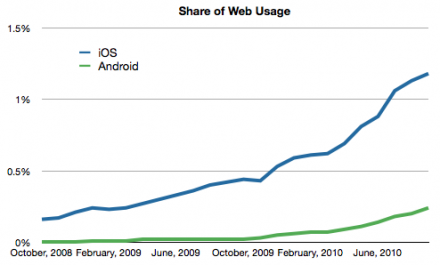Social games on iPhone, iPad and iPod touch devices are competing for television viewers. In fact, these apps, tracked on the Flurry network alone, comprise of a daily audience of more than 19 million who spend over 22 minutes per day using these apps. Treated as a consumer audience, its size and reach rank somewhere between NBC’s Sunday Night Football and ABC’s Dancing with the Stars, and only 4 million viewers shy from beating the number one prime-time show on television, FOX’s American Idol.
via Flurry. Continue reading “Apps attract more viewer attention than most TV shows”

